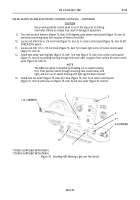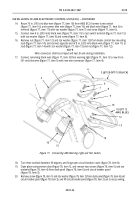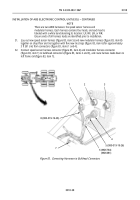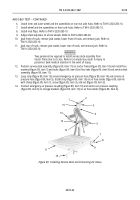TM-9-2320-283-13-P - Page 164 of 400
0018-62
TM 9-2320-283-13&P
0018
1
2
ABS SELF TEST
1.
Connect battery power (TM 9-2320-283-20).
NOTE
Normal operating range is 105–140 psi (724–965 kPa). The low air
pressure warning lamp and buzzer goes off at approximately 64–76
psi (441–524 kPa).
2.
Start engine. Refer to TM 9-2320-283-10. Allow engine to run until air pressure builds up in reservoirs
and low air pressure warning lamp and buzzer go off.
NOTE
Assistant will help listen for air leaks by walking around vehicle
when service brake pedal is depressed.
3.
Stop engine. Refer to TM 9-2320-283-10. Depress service brake pedal, and listen for air leaks. Hold
pedal down for a minimum of 10 seconds and observe front and rear air pressure gauges for any
noticeable drop in air pressure. If air pressure drops, refer to troubleshooting, WP 0009.
NOTE
Whenever ignition switch is turned on, the ABS ECU automatically
run through a self test and ABS amber warning light illuminates for
three seconds and goes off. If fault is found, ABS warning light will
stay on.
4.
Turn on ignition switch. Refer to TM 9-2320-283-10. Observe ABS warning light (figure 88, item 1) on
center control panel (figure 88, item 2) illuminate for three seconds and then go off. At same time, listen
for all four modulators to cycle twice; a clicking sound should be heard. Turn ignition switch off.
Figure 88. ABS Warning Light Operation.
NOTE
Each modulator makes a popping sound when it releases air.
5.
Depress and hold service brake pedal down, turn ignition switch on, and listen for all four modulators to
dump air. If no popping sound can be heard, refer to troubleshooting, WP 0009.
Back to Top




















